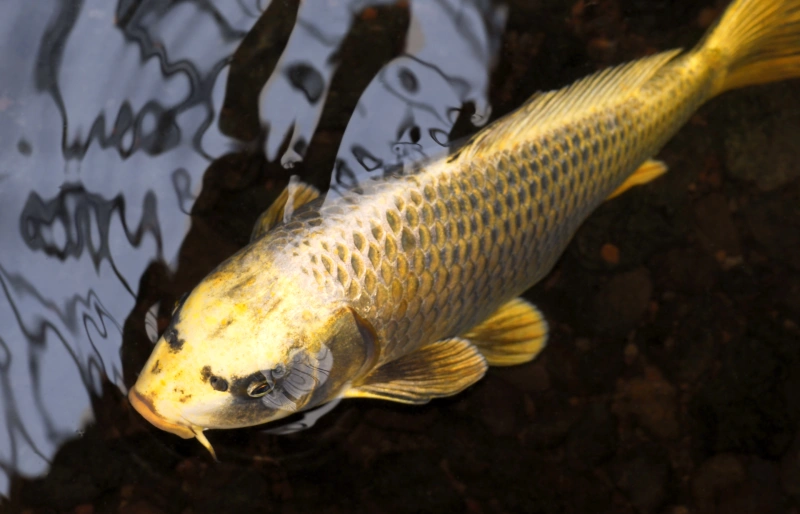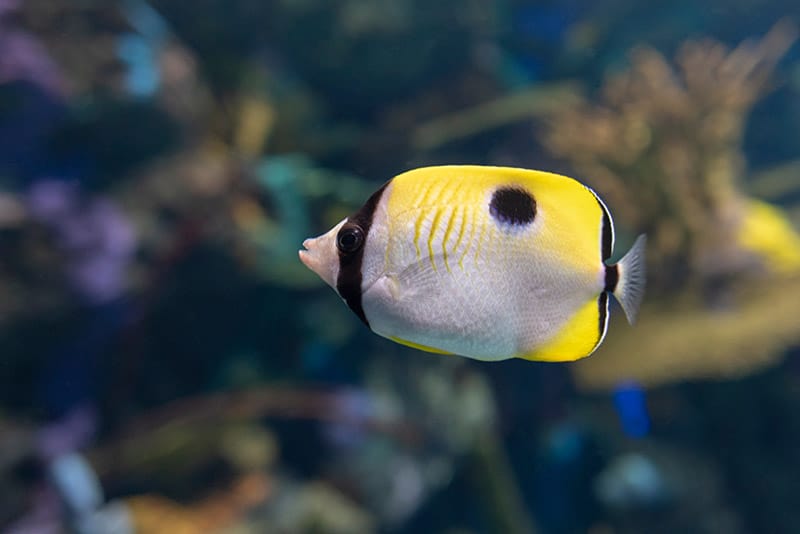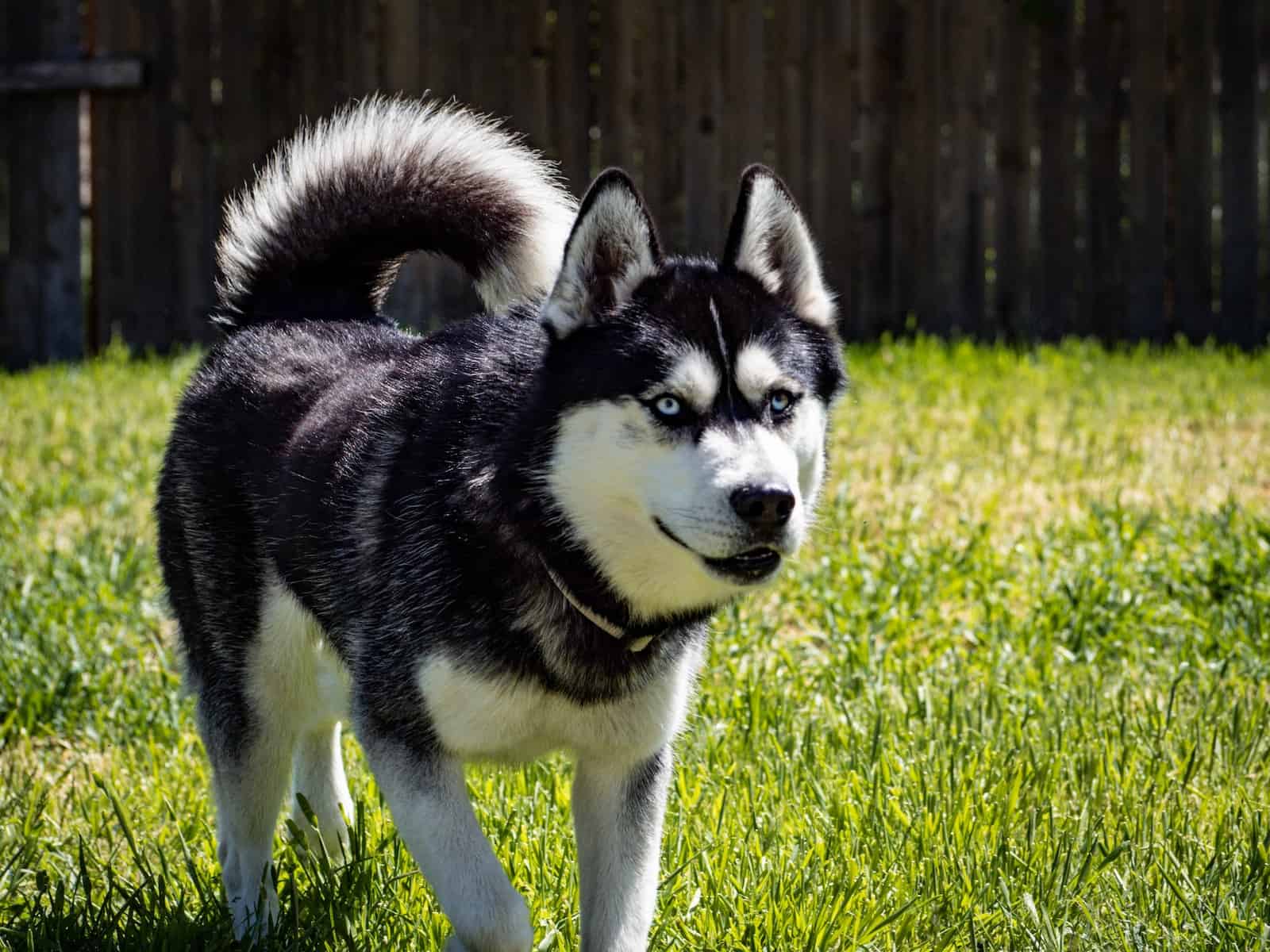Click to Skip Ahead
When it comes to pond fish, koi are second to none. They are loved for their beauty, grace, and size. Due to their popularity, koi have been selectively bred into dozens of varieties, all with their own unique characteristics. One koi variety that many people have never heard of is the Gold koi fish, also known as the Yamabuki Ogon or just as Ogon. Keep reading as we teach you everything there is to know about the Gold koi.

Gold Koi Fish Overview
| Species Name: | Cyprinus carpio |
| Family: | Cyprinidae |
| Care Level: | Easy |
| Temperature: | 68℉ to 75℉ |
| Temperament: | Intelligent, gentle |
| Color Form: | Gold metallic, sometimes silver |
| Lifespan: | 35+ years |
| Size: | Up to 35 pounds and 2 feet in length |
| Diet: | Omnivore, pellets, flakes, fruits, veggies |
| Minimum Tank Size: | 1,000 gallons |
| Tank Set-Up: | Fine gravel, live plants, lots of small rocks |
| Compatibility: | High, non-aggressive toward larger fish |
The Earliest Records of Gold Koi Fish in History
The Yamabuki Ogon koi was developed in 1947 by a koi breeder named Sawata Aoki. Sawata developed this fish after seeing a beautiful shimmer on a black carp caught by some children in a brook between 1912 and 1926. He set out to create a fish that shimmered all over, stating that he wanted to create a koi whose entire body shone like gold. From this vision, the Yamabuki Ogon was born.
The Yamabuki Ogon is a solid-colored koi featuring metallic gold scales. The gold color can vary in shade, ranging between a deep gold and a light, silvery gold, with many sporting a lemon yellow. Some Yamabuki Ogon may have exceptionally glittery scales; the fish are known as Ginrin Yamabuki.
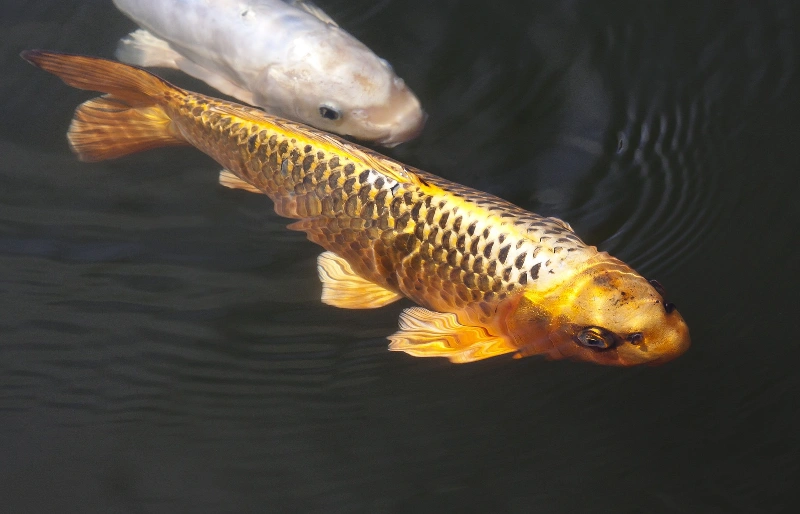
How Gold Koi Fish Gained Popularity
Koi have been around for a long time, with modern koi fish originating in Japan at the beginning of the 1800s. Before that, the Chinese were breeding carp, the cousin of the koi, as early as the 4th century.
The Gold koi fish is relatively popular among enthusiasts but can be somewhat challenging to acquire. Only a handful of koi varieties are available at most pet stores and aquatic shops, and specialty koi, like the Yamabuki Ogon, are often only available through specialty retailers and breeders.
They are expensive and difficult to acquire but popular with koi enthusiasts. Yellow koi are believed to balance out the darker colors in a pond, making the Yamabuki Ogon a top choice for bringing shimmers of gold and yellow to ponds. In fact, many koi enthusiasts consider the Yamabuki Ogon a necessity to balance the colors and bring brightness to their ponds.
Formal Recognition of Gold Koi Fish
Among the koi varieties, the Yamabuki Ogon belongs to the Hikari Muji group. All Ogon koi are solid in color and have a metallic finish to their scales. They should be free of blemishes or secondary colors to meet the standard of the Ogon. All body parts should be free of markings, including the face and fins.
Gold koi are among the most social koi varieties, often eating directly from people’s hands. They are active, exuberant fish that love to eat and seem curious about interacting with the world around them.
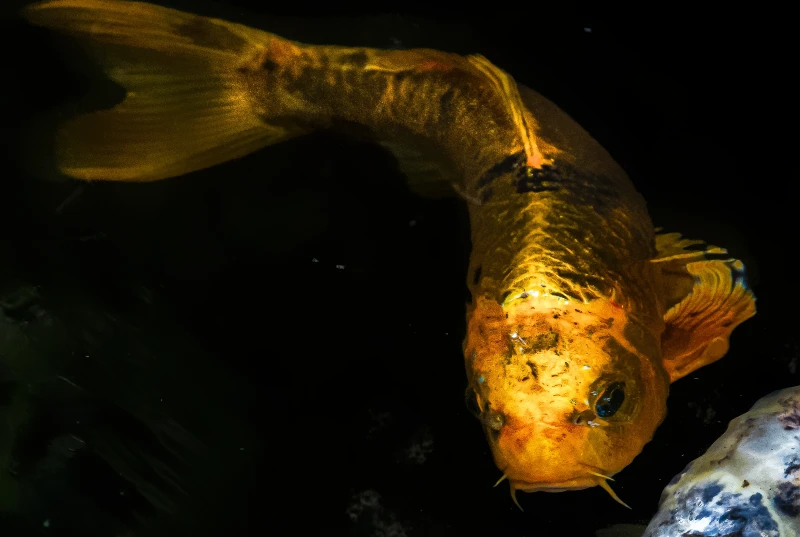
The 3 Unique Facts About Gold Koi Fish
1. Hikari Muji
In koi judging, the Yamabuki Ogon belongs to the Hikari Muji group. These solid-colored koi fish are devoid of markings and have shiny, metallic scales.
2. Yamato Nishiki
As time passed, more koi breeders wanted to mimic the metallic appearance of the Yamabuki Ogon. As they began breeding koi with shimmery scales, they eventually created the silver Platinum Ogon, coral Kohaku, a color and pattern combination known as Yamato Nishiki in the Aya Nishiki koi, orange Orenji Ogon, and white Purachina.
3. Yamabuki Ogon Price
Gold koi are quite pricey, especially for high-quality fish. Even for low-quality Yamabuki Ogon, you can expect to spend around $100. For high-quality and show-quality Yamabuki Ogon koi, you may spend upwards of $500 per fish. Some specialty Yamabuki Ogon color shades even sell for $1,800 or more.
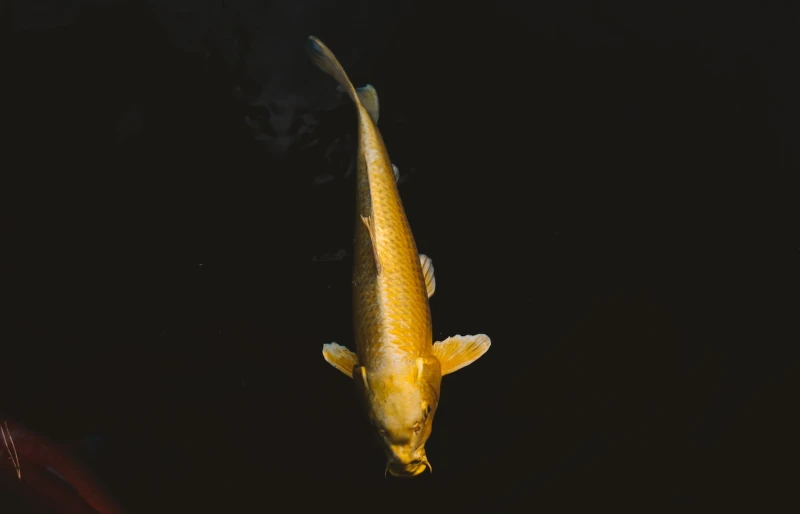
Do Gold Koi Fish Make Good Pets?
Koi typically make great pets, but they do best in ponds. They can get large, exceeding 1–2 feet long in adulthood. The Gold koi is no exception, so it’s essential to be prepared with an appropriate environment. Koi can be kept in aquariums, but they must be large and have excellent filtration.
Koi are hardy fish that can live long lives, so bringing home a Yamabuki Ogon is a long-term commitment. It’s not just a commitment of time but also a commitment to providing a high-quality koi diet and excellent water quality to support a long, healthy life. Because of their social nature, the Yamabuki Ogon is ideal for those looking for a fish that will eat from their hands.

Final Thoughts
The Yamabuki Ogon, or Gold koi, is a social fish with metallic scales. These scales are yellow or gold, but they must be devoid of all markings and secondary colors to meet the standard of the variety. Gold koi are expensive, especially for high-quality specimens. They get large and live long lives, and many koi enthusiasts consider the Yamabuki Ogon the perfect addition to any pond to bring brightness and life to the water.
Featured Image Credit: Christian Musat, Shutterstock
